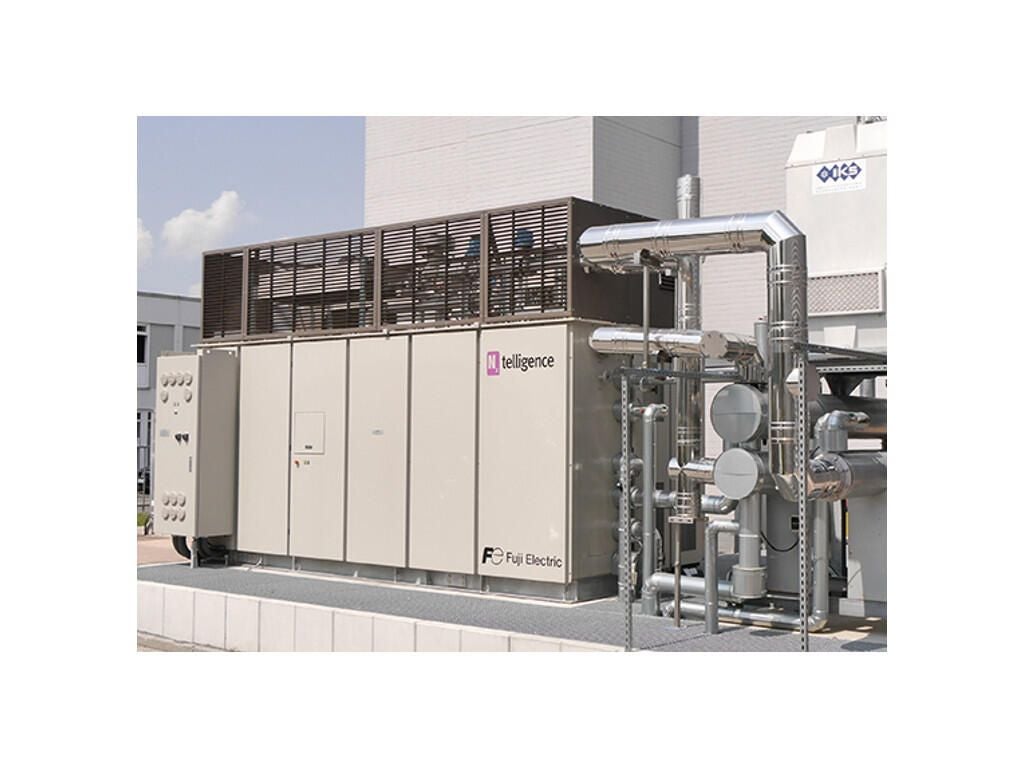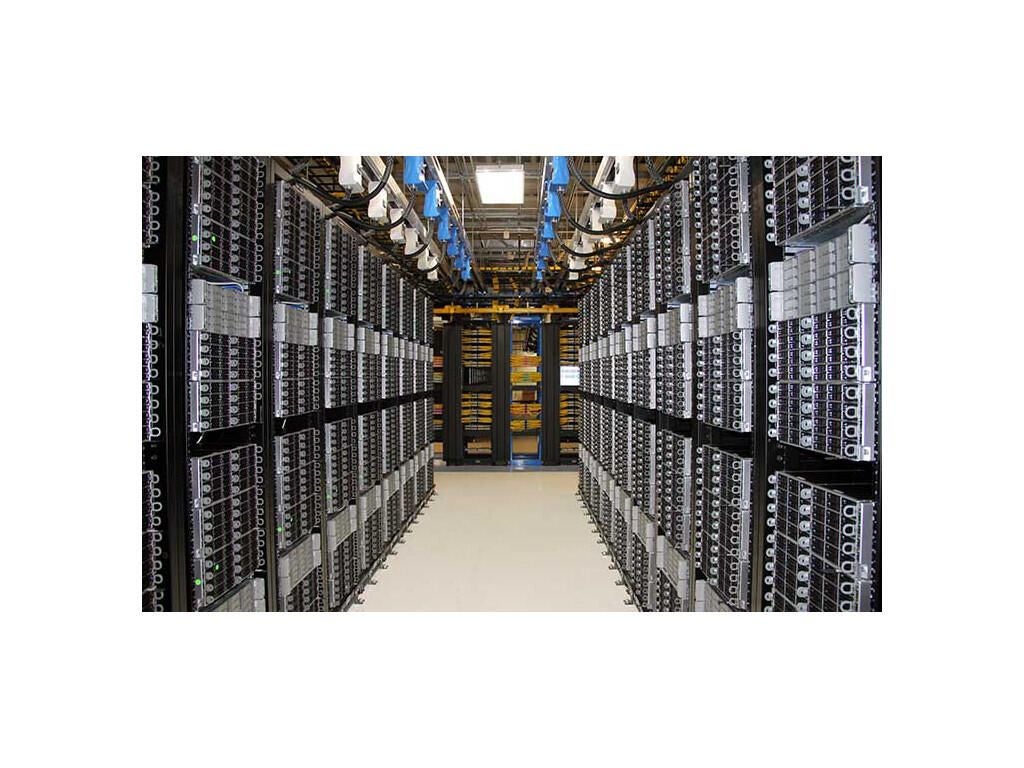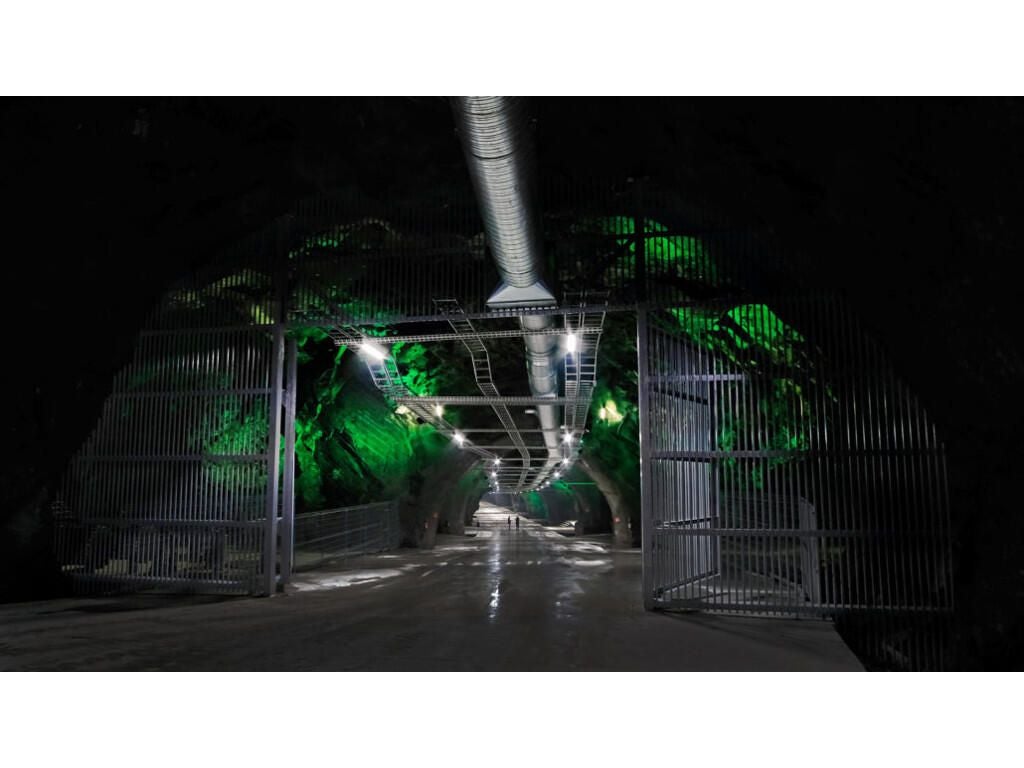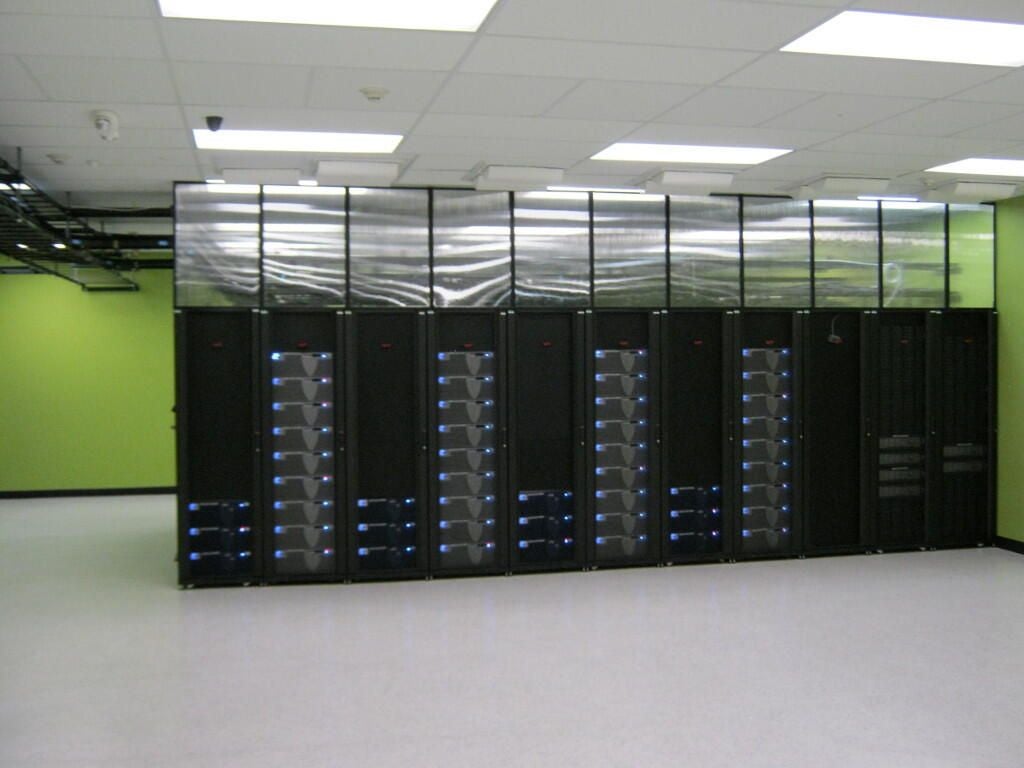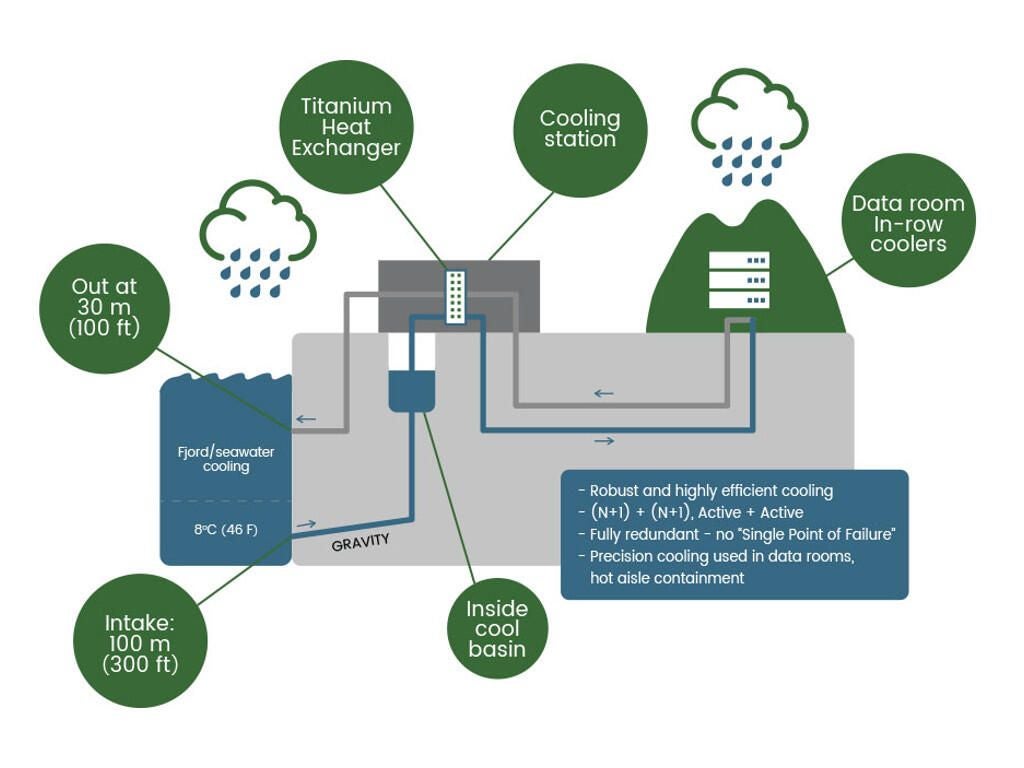Photos: The 20 greenest data centers in the world
Image 1 of 20
1. Apple
Apple has long had a commitment to going 100% renewable at its data centers, a mark it hit all the way back in 2013.
Apple also requires all future data centers to be built in areas with access to renewable resources, so as the company continues to grow it will continue to do so with the environment in mind.
On April 9, 2018, Apple announced that it was globally powered by 100% renewable energy. Included in that statistic are Apple stores, data centers, offices, co-location facilities, and 23 of its suppliers.
SEE: Green tech initiatives: Best practices and breakthroughs (free PDF) (TechRepublic)
2. Verne Global
You may not have heard of it if you don’t deal with the high-performance computing world, but Verne Global is a big name in green computing.
The Verne Global data center in Keflavik, Iceland, is run completely on renewable energy in the form of geothermal and hydroelectric power, both of which are abundant in Iceland. What’s more, Verne only uses 10% of the electric-producing capacity of its systems, so it can grow a lot before having to worry about going back on the grid.
SEE: Green tech initiatives: Best practices and breakthroughs (free PDF) (TechRepublic)
3. Facebook
Facebook has custom engineered every part of its data centers to save energy and water by installing water-saving appliances, using native plant species for landscaping, and engineering systems that need minimal cooling and power.
Every data center Facebook has built since 2013 has been run on 100% clean and renewable energy, and any future data centers have to meet that criteria as well.
Facebook has also made a commitment to be powered by 100% renewable energy by 2020.
SEE: Green tech initiatives: Best practices and breakthroughs (free PDF) (TechRepublic)
4. eBay
eBay has been working hard on green data centers for years. Two data centers in particular, Project Topaz and Project Mercury, take advantage of their environments to reduce energy consumption costs.
Project Topaz, located in South Jordan, UT, uses temperature monitors located in each rack to get precise measurements of where more cooling is needed. Instead of constantly pumping cold air into a massive data center, Topaz sends the cool air where it’s most needed, lowering costs by 50% and earning a gold status from the US Green Building Council’s Leadership in Energy and Environmental Design (LEED) certification system.
Project Mercury, on the other hand, is located in the hot Phoenix desert–not the most ideal place to build a massive, power-hungry data center. Despite that, Mercury has logged PUEs as low as 1.04–amazingly low. Mercury uses a water-cooling system to move hot air out of its racks: It pumps cold water through the server rooms and sends it off to be cooled. Water cooling can be much more efficient than air, and eBay has shown it with Mercury.
SEE: Green tech initiatives: Best practices and breakthroughs (free PDF) (TechRepublic)
5. Switch
Colocation company Switch operates several data centers, all of which it powers with renewable energy. In fact, it was the only company to score perfectly on Greenpeace’s 2017 Clicking Clean Report by using 100% renewable energy in all its data centers.
Switch has taken steps like removing chemicals from its cooling systems, which increased water conservation by 400%, and building its own solar farms in Las Vegas that are able to completely power their data centers.
SEE: Green tech initiatives: Best practices and breakthroughs (free PDF) (TechRepublic)
6. Google
Google is well known for its environmental endeavors, which have gone on for over a decade. The company was carbon neutral in 2007, and in 2017 it reached 100% renewable status in its data centers.
Google uses evaporative cooling whenever possible, turns the temperature up in server rooms to cut down on cooling, builds custom high-efficiency servers to minimize energy requirements, and even turns its own machine learning tools to the task of increasing energy efficiency.
SEE: Green tech initiatives: Best practices and breakthroughs (free PDF) (TechRepublic)
7. Microsoft
Microsoft’s data centers have been carbon neutral for some time, and the company continues to improve on its use of renewable energy to power them.
What’s impressive about Microsoft’s green data centers is its collaboration with the US Green Building Council to build a standard model for its future data centers that will ensure they’re LEED certified as soon as they’re constructed. The plans for Microsoft’s energy-efficient data centers are going to be used as a standard for LEED certification, paving the way for more green data centers in years to come.
SEE: Green tech initiatives: Best practices and breakthroughs (free PDF) (TechRepublic)
8. Amazon
Amazon has been criticized for its lack of green energy usage, but since it scored poorly in Greenpeace’s Click Clean report things have changed.
Amazon has built a number of wind and solar farms to power its AWS data centers, has carbon-neutral facilities in numerous countries, and is near 50% renewable energy in its AWS data centers.
In April 2019 Amazon announced the planned construction of three new wind farms, located in the US, Ireland, and Sweden. The wind farms will be used to bring AWS data centers closer toward Amazon’s goal of 100% renewable energy.
SEE: Green tech initiatives: Best practices and breakthroughs (free PDF) (TechRepublic)


9. Other World Computing
9. Other World Computing
Other World Computing headquarters itself in Woodstock, IL, and boasts a 100% wind-powered facility that’s heated and cooled by geothermal energy. Its facilities also have an onsite solar farm and robust recycling and water conservation programs, making OWC green not just in its data center, but from top to bottom.
The company holds a LEED platinum certification, the highest available.
SEE: Green tech initiatives: Best practices and breakthroughs (free PDF) (TechRepublic)
10. General Electric
General Electric has a huge presence in Louisville, KY, and its data center located there is green enough to earn LEED platinum, which GE said puts it in the 6% greenest buildings rated.
GE made its data center green by reusing existing facility and installing several of its own high-efficiency systems to minimize electricity costs.
SEE: Green tech initiatives: Best practices and breakthroughs (free PDF) (TechRepublic)
11. Equinix
Equinix operates several data centers around the world, all of which have found unique ways to stay green and minimize impact.
Its Toronto facility draws water from the depths of Lake Ontario to cool its data center and other buildings, Its Frankfurt, Germany, location gets 24% of its power from onsite hydrogen fuel cells, And its Amsterdam and Zurich data centers both use green roofs to reduce energy costs.
In 2018, Equinix said it reached several green data center milestones, with 95% of energy used in the US being renewable, 75% of Asia-Pacific data centers using renewable energy, and 90% of its data centers in Europe, the Middle East, and Africa being renewable.
SEE: Green tech initiatives: Best practices and breakthroughs (free PDF) (TechRepublic)
12. Yahoo
Yahoo reduced energy costs by 40% by building its data centers to look like chicken coops. By using a long, narrow design with high roofs at its Niagara, NY, data center, Yahoo managed to get a lot of passive cooling bang for its buck.
The chicken coop design is one of the patents that were put up for sale when Verizon bought Yahoo, making it possible that other businesses may adopt the model, which can deliver PUEs of 1.1.
SEE: Green tech initiatives: Best practices and breakthroughs (free PDF) (TechRepublic)
13. LinkedIn
LinkedIn’s data center in Hillsboro, OR, has been able to hit a PUE score of 1.06, making it incredibly energy efficient. It operates 100% on renewable energy and uses rear-door chilling units to cool servers for minimal cost.
Rear-door chilling is a popular choice for data centers because it captures hot air near server exhaust fans and never lets that escape into the room. This lowers overall cooling costs and keeps machines operating efficiently without needing to constantly pump cold air at them.
LinkedIn also uses water-side economizing technology to passively cool the data center, taking even more load off of active cooling systems.
SEE: Green tech initiatives: Best practices and breakthroughs (free PDF) (TechRepublic)
14. Alibaba
Chinese internet giant Alibaba has built more than one green data center in its home country, and was actually the first company to do so.
Alibaba’s first green data center, located in Hangzhou, used cool lake water to control the temperature in its server rooms. Alibaba also built a data center in the northern province of Hebei, taking advantage of cool air to control the temperature in its Alibaba Cloud North data center for free.
The company has plans to use an immersive liquid cooling system of its own design in a future data center. Immersive cooling is one of the most effective and environmentally friendly ways to keep computer hardware cold and can achieve PUE scores of 1.0, which is typically impossible for a traditional data center.
Alibaba has also helped offset its energy usage by planting several million trees through its Ant Forest program.
SEE: Green tech initiatives: Best practices and breakthroughs (free PDF) (TechRepublic)
15. LG
Korean electronics company LG’s Busan data center uses a built-up exterior air conditioning system to control the temperature of its servers. The system uses outside air to cool and recirculate warm air from the data center, earning it a Brill Efficiency Award thanks to the eight months of free cooling the system provides.
Winning the Brill award LG said, puts it in the top 0.1% of data centers in the world.
SEE: Green tech initiatives: Best practices and breakthroughs (free PDF) (TechRepublic)
16. Lefdal Mine Data Center
If you need to keep something cool, what better place to put it than deep underground? The Lefdal Mine Data Center is just the place, and by converting an abandoned mine in Norway into a (literally) cavernous data center, Lefdal has managed an impressive 1.15 PUE.
The Lefdal mine uses water from a nearby fjord to keep itself cool and generate power, didn’t need to build a new structure to house its computers, has zero CO2 emissions, and has a net water usage of zero.
The mine itself is huge, giving it plenty of room to expand for minimal costs and environmental impact.
SEE: Green tech initiatives: Best practices and breakthroughs (free PDF) (TechRepublic)
17. Rackspace
Rackspace’s Crawley, UK, data center is (the company claims) one of the greenest in the country. The energy it saves could power nearly 10,000 homes annually, largely by relying on passive air cooling that reduces its energy costs by 80%.
SEE: Green tech initiatives: Best practices and breakthroughs (free PDF) (TechRepublic)
18. Green House Data
Green House Data’s Cheyenne, WY, data center is, Green House said, 75% more efficient than the national average. It has a PUE score of 1.14, uses passive cooling, and its location was chosen due to the geographic safety of the region, meaning less costs for disaster recovery will be necessary in the long run.
SEE: Green tech initiatives: Best practices and breakthroughs (free PDF) (TechRepublic)
19. Green Mountain
Green Mountain, based in Norway, has several energy-efficient data centers, but DC1-Stavanger, an underground data center built in a former NATO ammo bunker, is an efficiency king.
The subterranean data center is powered by 100% renewable energy from its own triple-redundant hydroelectric grid, which gives it nearly 100% uptime along with being green.
Stavanger is also passively cooled using nearby fjords.
SEE: Green tech initiatives: Best practices and breakthroughs (free PDF) (TechRepublic)
20. Iron Mountain
Iron Mountain operates several data centers throughout the US, but all of them are green thanks to the Ringer Hill, PA, wind farm Iron Mountain partnered with.
The energy output from the wind farms is enough to power Iron Mountain’s data centers in three states. Iron Mountain also invests in solar energy and has invested in several green energy projects in the US and Canada with the aim to make its data centers green as they continue to expand.
Also see
- Agriculture 4.0: How digital farming is revolutionizing the future of food (cover story PDF) (TechRepublic)
- The 5 greenest tech companies in 2019 (TechRepublic)
- How AI could save the environment (TechRepublic)
- Photos: 13 ways to go green with tech (TechRepublic)
- 17 ways to recycle or sell your smartphone (TechRepublic)
- Enzyme which devours our plastic waste created by accident (ZDNet)
- Earth Day reminder: Your phone, tablet and printer are recyclable (CNET)
- How ecoATM Gazelle turns more than 4 million recycled smartphones into quick cash every year (TechRepublic)
- Earth Day: Green Tech Tips & Tricks (TechRepublic on Flipboard)
Editor’s note: This gallery was first published in April 2018, and it was updated in April 2019.
-
-
Account Information
Contact Brandon Vigliarolo
- |
- See all of Brandon's content









